An Idiot's Guide To The Toyota Supra: History and Generations

There are a few badges that resonate around the automotive world, with little extra explanation. Supra is surely high on that list, with decades of heritage, pop culture iconography and pure performance behind its deserved reputation.
On this page, we’re going to look into the history of the Toyota Supra over the years and try to show why it’s become so revered by so many. So sit down, strap in and let the good times roll.
The Origins of the Toyota Supra
Before the Supra, there was the Celica. In the 1970s, it was Toyota’s compact sports car and had been designed to be a fun, if practical and affordable little coupe. But Toyota had something more hardcore in mind, something that would push the boundaries of performance further. And that something was the Supra.
1978 Toyota Celica Supra A40/A50
The Supra made its first appearance in 1978. The first generation, codenamed the A40, was a literal evolution of the Celica, sharing the same mechanical underpinnings, but with an extended wheelbase and revised looks. Under its elongated bonnet lurked a 2.6-litre straight-six, with what now seems not much horsepower – just 110bhp.
In Japan, it never even got the Supra name. Instead, it was named the Celica XX to confirm its relationship with the sports car, but elsewhere in the world, it was named the Celica Supra. A 2.8-litre engine arrived in 1980, boosting power to a whopping 116bhp. Fun fact: In 1981 the Celica XX was the first ever car to have a navigation computer.
The first generation Supra wasn’t exactly tearing up the tarmac – it was designed to be a comfortable grand tourer rather than an out-and-out sports car, and a rival for the Datsun Z cars. But it set a benchmark for what the badge would represent – a distinctive, rear-wheel-drive coupe with a straight-six engine, designed for driver enjoyment.
1981 Toyota Celica Supra A60
Cometh 1981, cometh a new Celica, which also meant a new Celica XX, which meant a new Celica Supra outside of Japan. The sportiness level was upped with a new 2.8-litre 5M-GE straight six, and pop-up headlights (which, as we all know, are very important for performance).
The new Celica Supra also had independent rear suspension for the first time, which made a big difference to its previously unremarkable handling, and made it attractive for motorsport use.
In the UK, Win Percy piloted a Celica Supra in the 1982 British Saloon Car Championship and won a race in 1984 before handing his car to motorbike icon Barry Sheene the following year. A Celica Supra also won the 1985 Ulster Rally in the hands of Per Ekland.
1986 Toyota Supra A70
February 1986 saw the arrival of the third-generation Supra, and for the first time, it wasn’t part of the Celica family. Named simply the Supra, the A70 was all-new, with a shorter body and a chassis that once again trod the line between cruiser and sports car.
With double-wishbone suspension all around, handling was improved considerably, while the engine options were increased for different markets, with a 3.0-litre 7M-GTE turbo unit taking the headlines with 230bhp, and then taking more when it was boosted to 270bhp in the Supra 3.0GT Turbo A. This homologation special let the A70 Supra compete in Group A rallying, where it was the forerunner to the iconic four-wheel-drive Celica GT-Four
The UK didn’t initially get the turbocharged version of the 7M-GTE engine, but on these shores, the 7M-GE (sans T) still made 201bhp, which was pretty potent for the mid-1980s. And crucially, it drove very nicely indeed, with praise lavished upon it by motoring journalists for being entertaining in the twisties while still being great at long motorway journeys.
The turbo Supra eventually touched down in Blighty in 1989, with a wodge more power and torque and a 0-62mph time nearly two seconds faster than the non-turbo model.
1993 Toyota Supra A80
By the early ‘90s, the Japanese had gotten rather good at making sports cars. As well as the A70, customers were being spoiled by cars like Mazda’s MX-5 and RX-7, the Honda NSX, the Nissan 300ZX and the Mitsubishi 3000GT.
And so into the fray came the fourth-gen Supra, codenamed the A80. Expectations were high but were more than met when Toyota decided to drop a little something called the 2JZ-GTE engine. Around it was wrapped a flowing set of lines with a long bonnet and an optional massive rear spoiler. The A80 was shorter, lower, wider and more aero than the A70, and considerably lighter, too. Power options varied between 220bhp and a massive 326bhp, allied to a six-speed manual gearbox.
It was a game-changer, winning group tests around the world and even smashing supercars like the Porsche 911 Turbo and the Aston Martin DB7. The engine was particularly praised, and it proved massively popular with the tuning crowd, with modifications able to extract frankly ludicrous amounts of power. Think north of 2000bhp. Yeah.
The A80 was also seized upon by the motorsport world, winning all manner of competitions from Le Mans to Pikes Peak to Japanese GT races.
Trouble was, not that many people were buying sports cars in the mid-90s. By 1996 the Supra had sold just 600 units in the UK and it was discontinued. It was dropped from sale in the US a couple of years later, meaning only Japan got new Supras until production was finally halted in 2002.
2019 Toyota GR Supra (J29/DB)
For more than a decade, the world had to live without being able to buy a new Toyota Supra. Sure, we had the Fast and Furious movies to keep the legend alive, but that was about it. But then in 2018, Toyota released a teaser image ahead of the Geneva Motor Show. Prototypes were spotted testing. Hype was built and the internet frothed.
And then in 2019, the all-new, fifth-generation Supra (or the GR Supra, to give it its proper title) went on sale, 17 years after the previous model was withdrawn from sale. Developed in collaboration with BMW, it had been a project seven years in the making, and married BMW’s excellence in straight-six engines with Toyota’s skills in making sports cars in the wake of the GT86. BMW’s version of the car ended up being the latest Z4.
The aim for the new Supra (codenamed J29/DB) was to tackle and beat the Porsche 718 Cayman. While that might have been a goal that was slightly too lofty, it’s still a very decent touring sports car to drive, with 335bhp and, originally, an eight-speed automatic transmission. A six-speed manual model was added in 2022, as was a 255bhp 2.0-litre, four-cylinder engine option.
Sure, the J29 doesn’t quite hit the legendary heights of the A80, but it’s a Supra in more than just name. And you can buy it. Surely that’s something to be happy about.
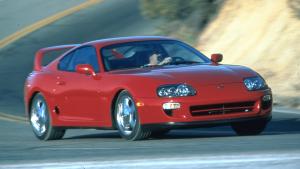

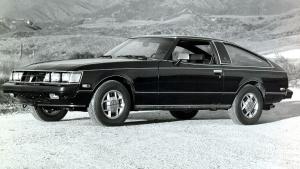
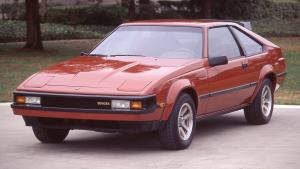
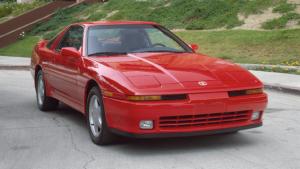
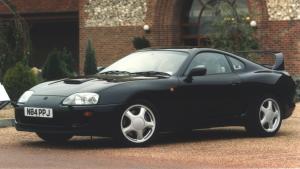
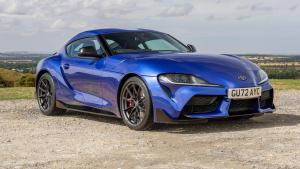
Comments
No comments found.
Topics
Manufacturers
Sponsored Posts